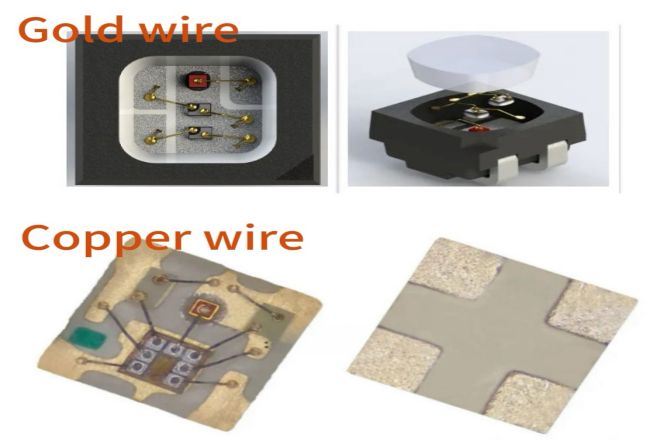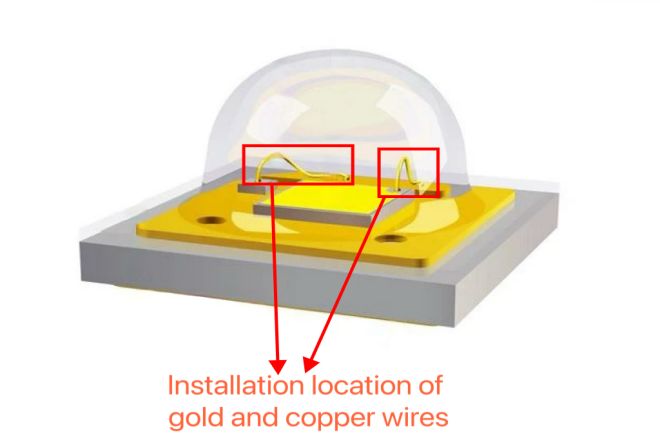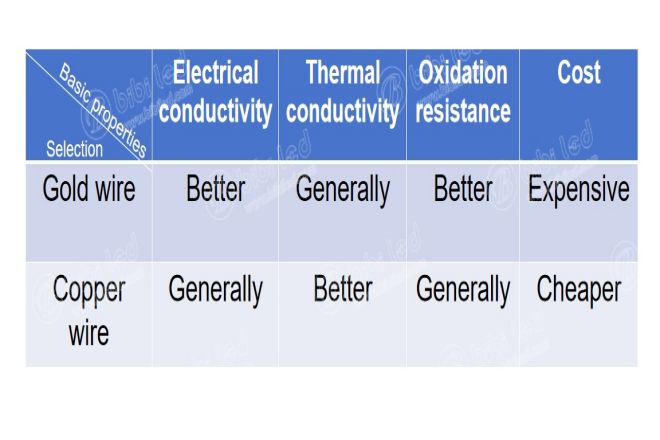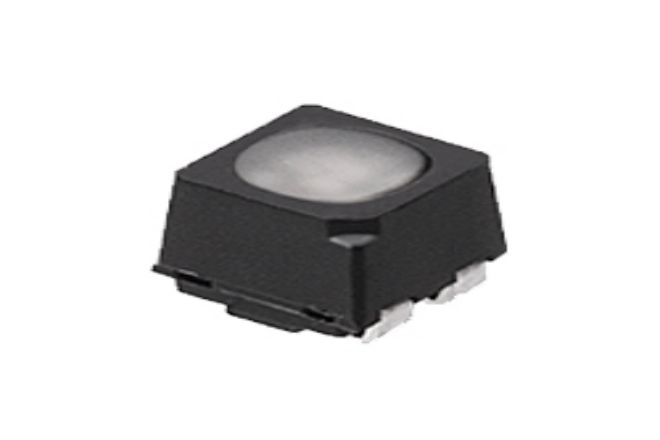Introduction

En entrant dans le monde éblouissant des écrans LED, chaque flux de lumière et d'ombre incarne l'essence de la technologie. Cependant, derrière Affichage LED, un choix subtil mais crucial affecte discrètement la qualité et le coût de l'image – c'est-à-dire la bataille de l'emballage entre le fil d'or et le fil de cuivre.
Cet article vous emmènera directement dans ce monde microscopique de la concurrence, révélant les différences fondamentales entre le fil d'or et le fil de cuivre dans les emballages d'affichage LED, vous permettant de comprendre rapidement comment ces deux matériaux affectent l' luminosité, la stabilité, la durée de vie et les avantages économiques de l'écran.
Découvrons ensemble les secrets derrière l’affichage LED !
1. Où sont utilisés les fils d'or et les fils de cuivre dans les écrans LED ?

Le fil d'or et le fil de cuivre jouent un rôle essentiel dans le processus d'emballage des écrans LED. Ils sont principalement utilisés pour connecter les puces LED et les supports afin de garantir que le courant peut être transmis en douceur du circuit externe à la puce LED, afin qu'elle puisse émettre de la lumière.
Ce processus de connexion n’est pas seulement l’une des étapes clés du packaging LED, mais affecte également directement les performances, la stabilité et la durée de vie de l’écran LED.
Le processus d'emballage des LED, qu'il soit connecté avec un fil d'or ou un fil de cuivre, nécessite une technologie de soudage précise et un contrôle qualité strict.
Le choix du procédé de soudage et le réglage des paramètres ont un impact important sur la qualité de la connexion et les performances des écrans d'affichage LED. Dans le même temps, le choix des matériaux d'emballage et l'optimisation du processus d'emballage sont également des facteurs clés pour améliorer les performances des écrans d'affichage LED.
2. Comparaison des caractéristiques de base du fil d'or et du fil de cuivre

Dans le conditionnement et la connexion des écrans d'affichage LED et d'autres appareils électroniques, les fils d'or et de cuivre sont largement utilisés en raison de leurs propriétés physiques et chimiques uniques. Voici une comparaison détaillée des deux en termes de conductivité, de conductivité thermique, de résistance à l'oxydation et de coût :
1). Conductivité électrique
- Fil d'or :
Le fil d'or est connu pour son excellente conductivité et sa résistivité extrêmement faible. Cela signifie que pendant le processus de transmission du courant, le fil d'or peut réduire plus efficacement la perte d'énergie causée par la résistance, garantissant que le courant circule vers la puce LED de manière stable et efficace, améliorant ainsi la luminosité et l'efficacité lumineuse de l'écran d'affichage.
- Fil de cuivre :
Le fil de cuivre a également une bonne conductivité, mais sa résistivité est légèrement inférieure à celle du fil d'or.
Malgré cela, le fil de cuivre peut toujours fournir une capacité de transmission de courant suffisante dans la plupart des scénarios d’application pour répondre aux besoins lumineux des écrans d’affichage LED généraux.
2). Conductivité thermique
- Fil de cuivre :
Le cuivre est un excellent matériau conducteur thermique et sa conductivité thermique est bien meilleure que celle du fil d'or.
Dans l'emballage LED, une bonne conductivité thermique permet de dissiper rapidement la chaleur générée par la puce LED, empêchant la puce de surchauffer et d'être endommagée, prolongeant ainsi la durée de vie de l'écran LED.
- Fil d'or :
En revanche, la conductivité thermique du fil d’or est relativement faible.
Cependant, comme le fil d'or est principalement utilisé pour la connexion électrique plutôt que pour la dissipation de la chaleur dans le processus d'emballage des LED, sa conductivité thermique a un effet limité sur l'effet global de dissipation de la chaleur.
Dans des scénarios spécifiques, tels que les applications avec des exigences de transmission de courant élevées mais de faibles exigences de dissipation thermique, le fil d'or reste une option viable.
3). Résistance à l'oxydation
- Fil d'or :
Le fil d'or a une excellente stabilité chimique et ne réagit pas facilement avec l'oxygène ou d'autres produits chimiques présents dans l'air, il présente donc une excellente résistance à l'oxydation et à la corrosion.
Cette propriété permet au fil d'or de maintenir des connexions électriques stables dans des environnements difficiles, garantissant ainsi le fonctionnement fiable des écrans LED.
- Fil de cuivre :
Bien que le fil de cuivre ait une bonne conductivité électrique, sa stabilité chimique est relativement faible et il est facilement oxydé par l'oxygène de l'air.
Une couche de film d'oxyde se formera à la surface du fil de cuivre oxydé, entraînant une résistance accrue, une conductivité diminuée et même une défaillance de la connexion.
Par conséquent, lors de l'utilisation de fil de cuivre, des mesures de protection supplémentaires (telles que le placage à l'or, le placage à l'argent, etc.) sont généralement nécessaires pour éviter l'oxydation.
4). Coût
- Fil d'or :
L’or étant un métal rare et cher, le coût du fil d’or est relativement élevé.
Cela rend le fil d'or principalement utilisé dans des scénarios d'application haut de gamme avec des exigences de performances extrêmement élevées et insensibles aux coûts, tels que les écrans LED haut de gamme, les équipements médicaux, etc.
- Fil de cuivre :
En revanche, le cuivre est un métal relativement abondant et peu coûteux, de sorte que le coût du fil de cuivre est faible. Cela fait du fil de cuivre un choix largement utilisé dans les scénarios d'application généraux, tels que les panneaux d'affichage extérieurs, l'éclairage routier, etc.
3. Analyse de l'application du fil d'or et du fil de cuivre dans les écrans d'affichage à LED
Dans le processus d'emballage des écrans d'affichage LED, le fil d'or et le fil de cuivre sont les principaux matériaux de connexion, chacun présentant des avantages et des limites uniques. Voici une analyse détaillée de l'application des deux dans les écrans d'affichage LED :
1). Emballage en fil d'or
1.1). Avantages :
Haute luminosité : le fil d'or possède d'excellentes propriétés conductrices, ce qui peut assurer une transmission stable et efficace du courant aux puces LED, augmentant ainsi la luminosité de l'écran d'affichage.
Faible taux de défaillance : le fil d'or a une bonne stabilité chimique, n'est pas facile à oxyder et à corroder, peut maintenir une connexion électrique stable à long terme et réduit le taux de défaillance.
Longue durée de vie : Grâce aux excellentes performances du fil d'or, les écrans d'affichage LED encapsulés avec du fil d'or ont une durée de vie plus longue.
Convient aux scénarios d'application à forte demande, tels que écrans d'affichage intérieurs, l'éclairage automobile, l'équipement médical et d'autres scénarios avec des exigences de performances extrêmement élevées, l'emballage en fil d'or peut offrir de meilleures performances et une meilleure stabilité.
1.2). Inconvénients :
- Coût élevé : l'or est un métal rare et cher, donc le coût de l'emballage du fil d'or est relativement élevé, ce qui n'est pas propice au contrôle des coûts à grande échelle.
2). Emballage en fil de cuivre
2.1). Avantages :
Faible coût : le cuivre est un métal relativement abondant et peu coûteux, de sorte que le coût de l'emballage des fils de cuivre est faible et adapté aux scénarios d'application généraux.
Bonne conductivité thermique : le fil de cuivre a une excellente conductivité thermique, ce qui aide à dissiper rapidement la chaleur et à protéger les puces LED des dommages à haute température.
2.2). Inconvénients :
Conductivité relativement faible : Bien que la conductivité du fil de cuivre soit également très bonne, il existe encore un certain écart par rapport au fil d'or, ce qui peut affecter l'efficacité de la transmission du courant.
Facile à oxyder : la stabilité chimique du fil de cuivre n'est pas aussi bonne que celle du fil d'or, et il est facilement oxydé par l'oxygène de l'air, ce qui affecte la conductivité et la stabilité de la connexion. Par conséquent, lors de l'utilisation de fil de cuivre, des mesures de protection supplémentaires (telles que le placage à l'or, le placage à l'argent, etc.) doivent être prises.
Processus instable : Le processus d'emballage des fils de cuivre est relativement complexe et la stabilité peut être affectée par de nombreux facteurs (tels que la qualité du soudage, le traitement de protection, etc.), ce qui affecte à son tour la fiabilité et la durée de vie de l'écran.
3). Analyse du scénario d'application
- Scénarios d’application haut de gamme :
L'emballage en fil d'or est un choix plus approprié pour les écrans LED qui nécessitent une luminosité élevée, un faible taux de défaillance et une longue durée de vie, tels que les écrans intérieurs, l'éclairage automobile, les équipements médicaux, etc. Bien que le coût soit élevé, il peut garantir la stabilité et les performances de l'écran.
- Scénarios d’application généraux :
Pour les scénarios sensibles aux coûts qui ne nécessitent pas de performances particulièrement élevées, tels que panneaux d'affichage extérieurs, éclairage routier, éclairage domestique, etc., l'emballage en fil de cuivre est un choix économique et pratique.
En prenant des mesures de protection et un contrôle de processus appropriés, les performances de base et la fiabilité de l'affichage peuvent être garanties.
4. Comment choisissez-vous d'utiliser du fil d'or ou du fil de cuivre pour les écrans d'affichage LED ?

1). Scénarios d'application
Scénarios d'application haut de gamme : pour les scénarios avec des exigences de performances extrêmement élevées, tels que les écrans intérieurs, l'éclairage automobile, les équipements médicaux, etc., l'emballage en fil d'or peut offrir de meilleures performances et une meilleure stabilité, bien que le coût soit élevé.
Scénarios d'application généraux : Pour les scénarios tels que les panneaux d'affichage extérieurs, l'éclairage routier, l'éclairage domestique, etc. qui sont sensibles aux coûts et ne nécessitent pas de performances particulièrement élevées, l'emballage en fil de cuivre est un choix économique et pratique.
2). Budget des coûts
Fil d'or : Le fil d'or est coûteux et convient aux projets avec un budget suffisant et des exigences de performance élevées.
Fil de cuivre : il est peu coûteux, adapté aux projets avec un budget limité et n'a pas d'exigences de performances particulièrement élevées.
3). Entretien à long terme
Compte tenu du fonctionnement et de la maintenance à long terme des écrans d'affichage LED, le conditionnement en fil d'or peut avoir un taux de défaillance plus faible et une durée de vie plus longue, réduisant ainsi le coût de la maintenance et du remplacement ultérieurs. Cependant, cela doit également prendre en compte l'investissement initial élevé du conditionnement en fil d'or.
4). Prise en compte globale
Lors du choix d'utiliser un fil d'or ou un fil de cuivre pour les écrans d'affichage LED, les facteurs ci-dessus doivent être pris en compte de manière exhaustive et pesés en fonction des besoins spécifiques. Voici un bref cadre de décision :
Si le projet a des exigences extrêmement élevées en matière de luminosité, de stabilité et de durée de vie de l'écran d'affichage LED et que le budget est suffisant, il est recommandé de choisir un emballage en fil d'or.
Si le projet est plus sensible au coût et que les exigences de performance de l'écran d'affichage LED ne sont pas particulièrement élevées, un emballage en fil de cuivre peut être sélectionné.
Dans le processus de sélection, des facteurs tels que le niveau de processus du fournisseur, la qualité du produit et le service après-vente doivent également être pris en compte pour garantir que l'écran d'affichage LED final sélectionné répond aux exigences du projet et présente de bons effets de fonctionnement à long terme.
Conclusion
En résumé, le fil d'or occupe une place sur le marché des applications haut de gamme avec son excellente conductivité, sa résistance à l'oxydation et sa longue durée de vie, tandis que le fil de cuivre est largement utilisé dans les scénarios d'application généraux en raison de son avantage de coût.
Le fil d'or et le fil de cuivre ont leurs propres avantages dans l'emballage des écrans LED, et leur sélection doit être considérée de manière globale en fonction de plusieurs facteurs tels que des scénarios d'application spécifiques, des exigences de performances et un contrôle des coûts.
Enfin, si vous souhaitez en savoir plus sur les écrans LED, veuillez nous contacter.
